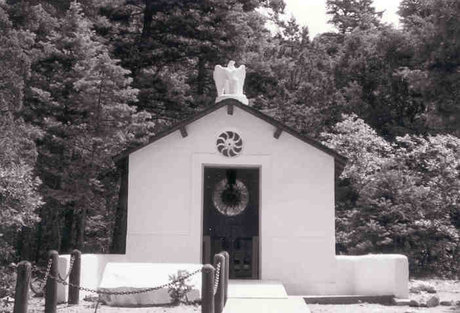Historical Significance Narrative -- LITERARY STATUS
National Register Nomination for the D.H. Lawrence Ranch
SECTION 8: Narrative Statement of Significance, Continued


2. Overview of Literary Standing
Lawrence has long been recognized in standard literature textbooks (like the Norton, Longman, and Oxford anthologies), and in hundreds of scholarly and critical books, as one of a handful of major English stylists of the early 20th‑century novel, often being grouped with James Joyce, Joseph Conrad, and Virginia Woolf. The influential British critic F. R. Leavis saw Lawrence as the supreme representative of the "Great Tradition" in the modern English novel, and the American scholar Harry T. Moore and his followers continued to cement Lawrence's place in the literary canon. Harold Bloom, one of today's leading critics, notes, "Lawrence at his strongest is an astonishing writer, adept at saying what cannot be said, showing what cannot be shown” (Bloom, D. H. Lawrence, 12). In the words of the latest Norton Anthology (2000), “Lawrence had vision; he had a poetic sense of life; he had a keen ear and a piercing eye for every kind of vitality and color and sound in the world, for landscape—be it England or Italy or New Mexico.” In addition, “His travel sketches are as impressive in their way as his novels,” for he “looked at the world freshly, with his own eyes, avoiding formulas and clichés” (Jon Stallworthy, Vol. 2, 2571). Jennifer Wicke's introduction to Lawrence in the Longman Anthology places special emphasis on his New Mexico ranch experience and refers to him as “a comet in British literature, arcing across its skies with vibrant energy and controversy” (Vol. 2, 2504-2505). His important impact on poetry has also been voiced by many, including scholar Sandra Gilbert and poet Karl Shapiro, who comments, “I think every modern American poet is in Lawrence's debt.”7 Lawrence--who has been linked with Walt Whitman, William Blake, and the Beat poets as a pioneer in style and theme--wrote nearly a thousand poems during his lifetime, eventually adopting a free verse form that allowed intuitive expression of the immediate present. Vivian de Sola Pinto remarks that Lawrence “said something in his verse that he could never have said in prose, and his best poems are among the most valuable and significant in the English language written in the twentieth century” (5). Cambridge University Press, which recently completed the most extensive three-volume biography of Lawrence, has been issuing as well the first scholarly edition of his works (currently over 25 volumes), including letters, novels, novellas, short stories, dramas, poetry, critical and philosophical essays, and travel sketches. He was a master in all of these genres and worked on all during his ranch years.
Lawrence societies have sprung up around the world to honor and study his writings, including the D.H. Lawrence Society of North America;8 and the national conference of the MLA (Modern Language Association)—the premier organization of literature teachers in America—contains an annual Lawrence session.9 The University of Texas, Austin, houses a stellar collection of his original manuscripts and paintings,10 and the State University of New York (Geneseo) produces the D.H. Lawrence Review, the leading journal dedicated solely to articles regarding Lawrence, his writings, and his circle of influence.11 One Lawrence first edition that sold for over $16,000 a few years ago is today listed at $25,000.12 Numerous film adaptations have been produced from Lawrence's works. Even on the Internet, his popularity has initiated two Lawrentian discussion‑group listserves and a host of websites.13 More than 10,000 people every year visit England's D.H. Lawrence Birthplace Museum (located at his family's former residence, 8A Victoria Street in Eastwood) and tour its "Blue Line Trail" to see places depicted in Lawrence's early novels and to stop at the Visitors' Centre next door.14 In 1985 a memorial stone for Lawrence was unveiled in the Poet's Corner of Westminster Abbey, featuring his phoenix symbol and the words "Homo sum! the Adventurer" ("I am man! the Adventurer").
Narrative by Tina Ferris & Virginia Hyde
(2004)



